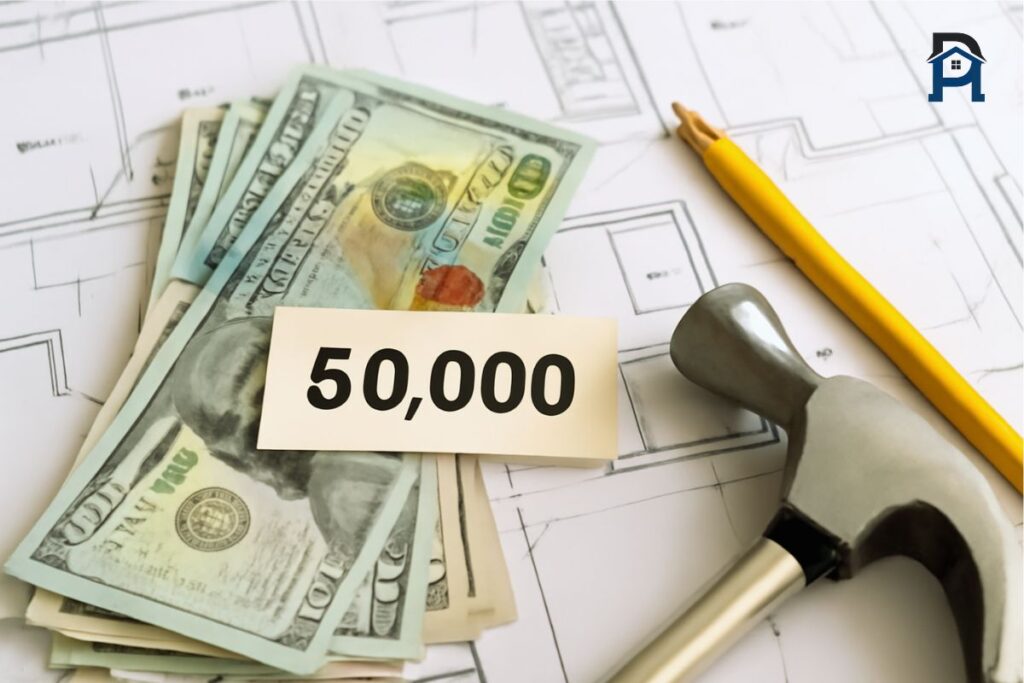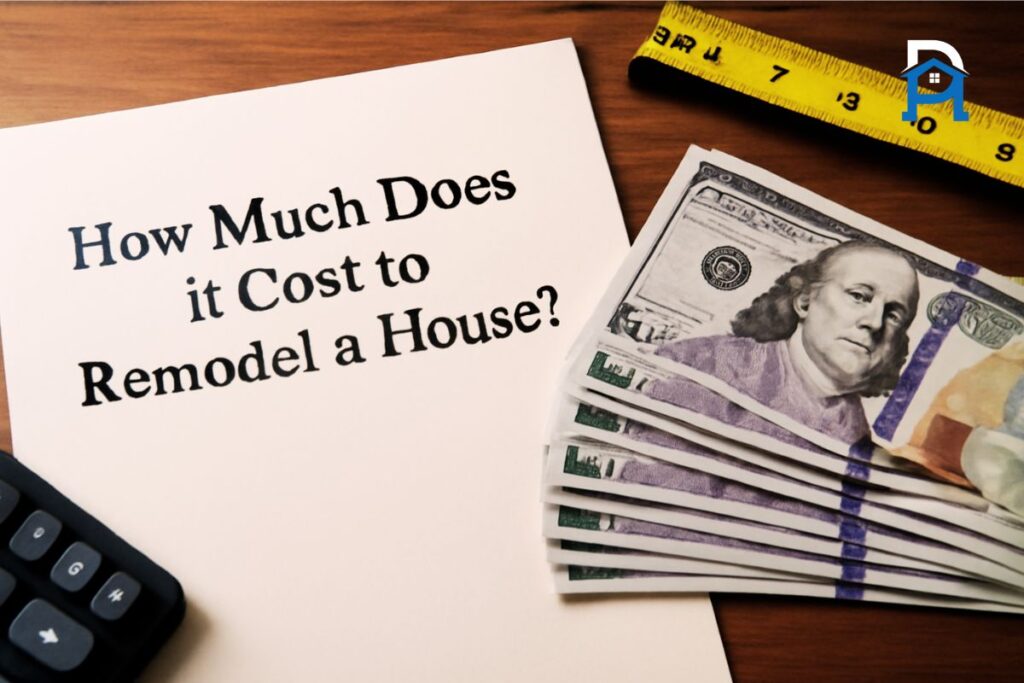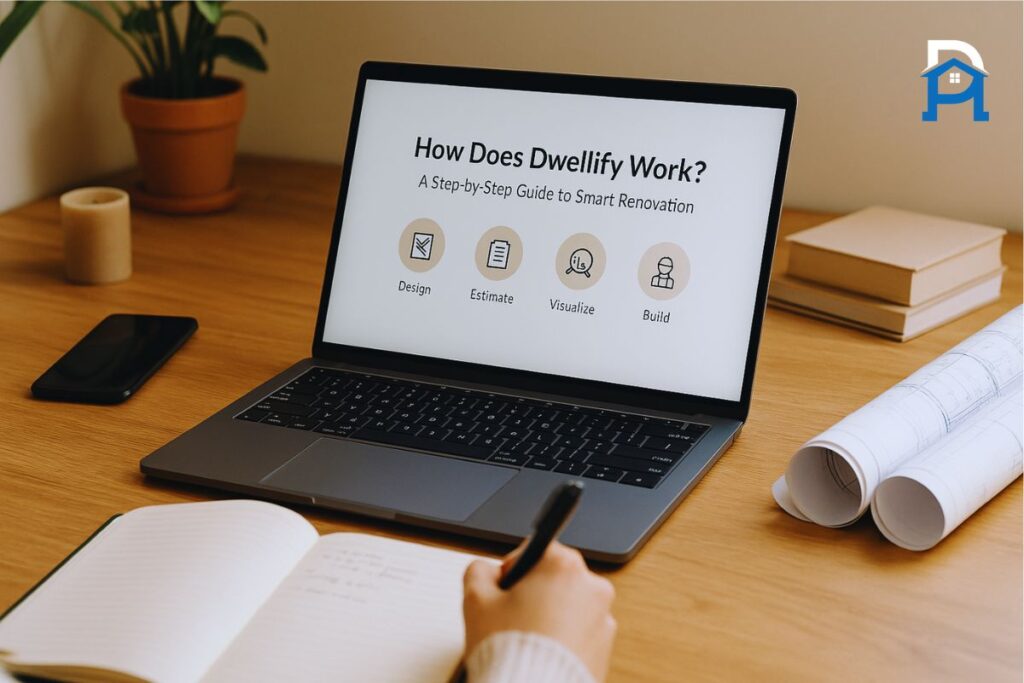If you’ve ever watched Selling Houses Australia and wondered, Wait, who’s footing the bill for all that renovation magic? You’re not alone.
Thousands of Aussie homeowners have asked the same question while watching Andrew Winter and his team turn tired homes into jaw-dropping showpieces.
I’ve followed the show for years, talked with homeowners who’ve been part of it, and dug into how the process really works — both on TV and in the real world. So, grab a coffee, and let’s break it all down together: who pays, how much, and what you can actually learn if you’re thinking about selling your own home in Australia.
Snippet-Ready Definition:
On Selling Houses Australia, homeowners pay what they can afford for renovations, while sponsors supply materials and the hosts contribute free labour — making the final makeover worth much more than the budget shown.
Mission Statement:
Our mission is to help Australian homeowners make smarter, more confident property decisions — whether they’re renovating, selling, or simply understanding the real costs behind TV makeovers. We believe in honest insights, practical advice, and transparency about what truly adds value to your home.
1. The Real Question: Who Actually Pays for Renovations in Australia?
Here’s the thing — in everyday life, if you’re selling your home in Australia, you’re the one who pays for renovations.
There’s no hidden team of experts waiting to paint your walls or redesign your kitchen for free (unless you’re on TV, of course).
Typically, homeowners cover all the expenses for:
- Painting and cosmetic upgrades
- Repairs, maintenance, and cleaning
- Staging and photography before listing
Sometimes, if you’re working with a real estate agent, they’ll suggest specific upgrades that could boost your sale price. But even then, you’re still footing the bill — though some agents offer “pay later” renovation partnerships where costs come out of the final sale proceeds.
In short: outside of TV, homeowners pay, but there are a few creative ways to ease the cost (we’ll get to that soon).
2. Behind the Scenes of Selling Houses Australia
Now, this is where things get interesting.
On Selling Houses Australia, the homeowners do pay, but not for everything.
Here’s how it really works:
- Homeowners contribute what they can afford. Every episode begins with Andrew asking, “What’s your budget?” That amount might be $20,000, $40,000, or whatever the owners can manage.
- Sponsors and the show pick up the rest. Many materials — paint, tiles, furniture, lighting — are donated by sponsors like Bunnings, Dulux, or Freedom.
- The hosts’ labour is free. The work of Wendy Moore, Dennis Scott, and their renovation team isn’t counted in the homeowner’s cost.
So even though the homeowner might spend $40,000, the total renovation value could be $100,000 or more once you include donated materials and professional labour.
The best part? That investment often transforms a property that’s been sitting on the market for months into one that sells in days — sometimes for tens of thousands more than the asking price.
3. How the Show’s Budget Works
You might’ve noticed how each episode mentions “a tight budget,” but the end results look like something out of a magazine. That’s not TV trickery — it’s sponsorship and planning magic.
Here’s what happens:
- The homeowner’s money sets the base budget.
- The show’s production team then leverages sponsor deals to multiply that value.
- Sponsors supply items (like new appliances, landscaping products, or décor) that make the transformation possible.
- The hosts’ time, design expertise, and labour are not charged to the homeowner.
So when you see a $30,000 budget turn into a $150,000-looking renovation, that’s why.
But there’s a trade-off: the homeowners don’t control every design choice, and they must agree to let the team take creative freedom.
4. How to Apply for Selling Houses Australia
If you’re thinking, “Wow, I’d love to be on that show,” — guess what, you actually can apply!
Here’s the process:
- Go to the official Selling Houses Australia application page (usually via Foxtel or the production company).
- Fill out the form, explaining why you need help selling your home.
- Share photos, your location, and your story — the emotional angle often matters.
- If selected, the team will visit your property, assess potential, and discuss your budget.
Keep in mind: homeowners must contribute financially, and your home should genuinely be struggling to sell.
But even if you’re not chosen, watching how they do it can teach you a ton about improving your property’s market appeal.
5. Renovation Costs in Real Life (Outside the Show)
Let’s step away from TV for a second. In the real world, Australian homeowners spend anywhere from $10,000 to $80,000 on pre-sale renovations depending on the property’s condition and goals.
Here’s a quick average guide:
- Paint and cosmetic fixes: $3,000–$8,000
- Kitchen refresh: $15,000–$30,000
- Bathroom upgrade: $10,000–$25,000
- Landscaping: $5,000–$15,000
- Staging & photography: $2,000–$5,000
Costs also vary by city — for instance, Sydney and Melbourne renovations are pricier than Brisbane or Adelaide.
A little tip? Don’t go overboard. The goal is to make your home look fresh and move-in ready, not to rebuild it entirely.
6. Breaking Down What You Actually Pay For
When you budget for a renovation, it’s not just about materials. Here’s what you’ll really pay for:
- Materials & fixtures: Paint, tiles, flooring, cabinets, lighting.
- Labour: Electricians, plumbers, builders, painters.
- Permits: Needed for structural work or extensions.
- Temporary costs: Storage or short-term accommodation if you move out during the reno.
- Clean-up & waste removal: Often overlooked but adds hundreds.
Here’s the thing — little costs add up fast. That’s why planning every dollar before starting helps you avoid “budget creep.”
7. How Renovations Impact Property Value & ROI
This is where it gets exciting. Renovations can boost your sale price — but only if done wisely.
Typical ROI figures in Australia look like this:
- Kitchen upgrades: 60–80% return
- Bathroom updates: 50–70% return
- Curb appeal & landscaping: 20–40% return
But there’s a catch — every suburb has what’s called a price ceiling. That means no matter how luxurious your renovation, buyers won’t pay beyond what similar homes in your area sell for.
So, don’t spend $100,000 on a reno if your neighbourhood’s top price is $900,000 — you’ll risk overcapitalising.
Pro tip? Ask your agent or a valuer before you start. They’ll tell you what adds value in your local market.
8. How to Finance Renovations Before You Sell
Not everyone has cash lying around for upgrades, and that’s okay.
You’ve got a few smart options:
- Use home equity: If your mortgage is smaller than your property value, you can borrow against the equity.
- Short-term renovation loans: Some banks and platforms like Elepay let you fund renovations now and repay after the sale.
- Pay-later agent partnerships: Some real estate agencies partner with renovators who take payment after settlement.
- Government incentives: Occasionally available for eco-friendly or accessibility improvements.
If your renovations are major, check with your accountant about capital gains tax implications — some improvements can affect your profit at sale.
9. Smart Renovation Decisions Before Selling
Here’s my golden rule: not every room needs a makeover.
Focus on what buyers notice first.
High-impact upgrades:
- Fresh neutral paint
- Modern light fixtures
- Updated handles, taps, and fittings
- Simple landscaping and clean exteriors
- Decluttered, staged spaces
If your home’s structure is sound, these affordable tweaks can make it shine.
And sometimes, the smartest move is to sell “as-is” — especially if renovations won’t yield much return in your market.
10. Legal and Disclosure Responsibilities
In Australia, homeowners must disclose major renovations and any structural or electrical work. You’ll need receipts, permits, and builder warranties for buyers’ peace of mind.
If you’ve done DIY work, be cautious — certain jobs (like plumbing or wiring) legally require licensed professionals.
Skipping that can cause issues during the sale inspection or even void your insurance.
Honesty builds trust. The last thing you want is a post-sale dispute because something wasn’t disclosed properly.
11. Common Myths About Selling Houses Australia
Let’s clear the air about a few myths floating around Reddit and property forums:
- Myth 1: “The show pays for everything.”
Nope — homeowners still contribute, though sponsors and hosts add immense value. - Myth 2: “Renovations always make you profit.”
Not necessarily. It depends on market conditions, location, and timing. - Myth 3: “You need a full renovation to sell.”
Many homes sell faster after small, smart updates. - Myth 4: “Those TV budgets are real.”
They’re real in spirit — but the final value is much higher thanks to sponsorships.
12. What the Experts Say
Real estate agents and renovation experts often echo this:
“Renovations are less about luxury and more about solving buyer hesitation.”
Andrew Winter himself has said multiple times that Selling Houses Australia isn’t about creating dream homes — it’s about fixing problems that stop a sale.
That might mean updating an old bathroom, improving street appeal, or removing bold paint choices that scare buyers off.
The show’s designers, Wendy Moore and Dennis Scott, balance creativity with practicality — their goal is to make the home feel current and welcoming, not over-styled.
13. Comparing TV Renovations vs Real-World Renovations
Here’s the big difference — time, money, and manpower.
On TV:
- You’ve got a full team of experts.
- Sponsors provide materials.
- Renovations wrap up in a few days (thanks to editing and overtime crews).
In real life:
- You’ll hire trades one by one.
- Materials come from your wallet.
- Projects can take weeks or months.
That’s why the show’s version looks magical — but it’s still rooted in achievable principles. With good planning, you can apply the same smart design logic at home.
14. Regional and Practical Factors Across Australia
Costs and rules vary depending on where you live.
In Sydney and Melbourne, trades are more expensive but resale values are higher.
In Brisbane or Adelaide, costs are lower, but so are profit margins.
Also, watch out for:
- Council approvals (especially for extensions or structural work)
- Heritage restrictions in older suburbs
- Strata rules if selling an apartment
Each state also has slightly different disclosure requirements, so check before you list.
15. Sustainable and Eco-Friendly Renovations
Eco-friendly updates are trending — and they can boost appeal too.
Think:
- Solar panels
- Water-saving taps
- LED lighting
- Better insulation
These don’t just help the planet — they lower energy bills, something buyers love. And if you’re lucky, you might even qualify for a government rebate or grant.
16. DIY vs Professional Renovations
Doing it yourself can save money, but it’s not always the best call.
DIY is great for:
- Painting
- Landscaping
- Simple décor or staging
Hire a pro for:
- Electrical or plumbing work
- Structural changes
- Roofing or waterproofing
Cutting corners here can cost more later if buyers request certified documentation or if you face insurance issues.
Comparison Table: TV vs Real-Life Renovation Costs in Australia
| Aspect | Selling Houses Australia | Real-Life Renovations (Average Homeowner) |
| Who Pays? | Homeowners pay what they can; sponsors cover products; hosts provide free labour | Homeowner covers all costs |
| Average Budget | $20,000–$40,000 homeowner contribution | $10,000–$80,000 depending on project size |
| Labour Costs | Free (host and team provided by the show) | $50–$120/hour for tradies |
| Materials | Sponsored (Bunnings, Dulux, Freedom, etc.) | Paid out of homeowner’s budget |
| Timeline | 3–5 days (TV condensed) | 2–8 weeks (real-world average) |
| Outcome | TV-quality transformation, boosted sale value | Market-ready, depends on budget & design |
| Extra Benefit | National exposure and expert design | Potential ROI if done smartly |
Quick Bullet Guide: How the Renovation Payment Works on the Show
- Homeowners contribute an amount they can afford (their personal budget).
- Sponsors donate materials like paint, tiles, and furniture.
- The show’s hosts (Andrew Winter, Wendy Moore, Dennis Scott) provide free labour and expertise.
- Production covers filming, logistics, and staging.
- Total value of the renovation often exceeds the homeowner’s budget by 2–3 times.
Conclusion
So, who pays for the renovations on Selling Houses Australia?
In simple terms: the homeowners pay what they can — and the show (through sponsors and free labour) does the rest.
The value they get far exceeds what they spend, both financially and emotionally. Their homes sell faster, for better prices, and with far less stress.
For everyday Australians, the lesson is clear:
- Plan smart renovations, not expensive ones.
- Focus on buyer-friendly improvements.
- Always check your budget and ROI before spending.
And remember — whether you’re on TV or not, the goal is the same: to turn your house into a home someone falls in love with the moment they walk through the door.
Frequently Asked Questions (FAQs)
1. Who pays for the renovations on Love It or List It Australia?
Homeowners pay for their own renovations on Love It or List It Australia. However, design teams may receive product discounts or sponsor support, making the upgrades look more affordable on-screen.
2. Do home renovation shows pay for the renovations?
Not entirely. Most renovation shows feature a mix of homeowner contributions, sponsor donations, and unpaid expert labour. The exact balance varies depending on the show’s format and production deals.
3. Did the pub on Selling Houses Australia sell?
Yes! In Season 15, the renovated pub in New South Wales eventually sold after the makeover increased its visual appeal and functionality — proving the show’s strategy works.
4. How much does the average renovation cost in Australia?
On average, Australian homeowners spend between $10,000 and $80,000 on pre-sale renovations. Larger projects like kitchens or extensions can exceed $100,000, depending on materials and trades.
5. Do Love It or List It clients get paid?
No, participants aren’t paid to appear on Love It or List It. They fund their own renovations, but benefit from professional design expertise, exposure, and potential property value gains.
6. Who pays for renovations on The Ugliest House in America?
In The Ugliest House in America (U.S. version), the homeowners don’t pay for the renovations — the network and sponsors fully fund the transformation as part of the show’s prize concept.
Disclaimer:
This article is for informational purposes only and is not affiliated with Foxtel or Selling Houses Australia. Renovation costs, sponsorship values, and show details may vary by season. Always consult a qualified real estate agent or licensed builder before making renovation or financial decisions.

I’m Bilal, the founder of Dwellify Home. With 6 years of practical experience in home remodeling, interior design, and décor consulting, I help people transform their spaces with simple, effective, and affordable ideas. I specialize in offering real-world tips, step-by-step guides, and product recommendations that make home improvement easier and more enjoyable. My mission is to empower homeowners and renters to create functional, beautiful spaces—one thoughtful update at a time.




